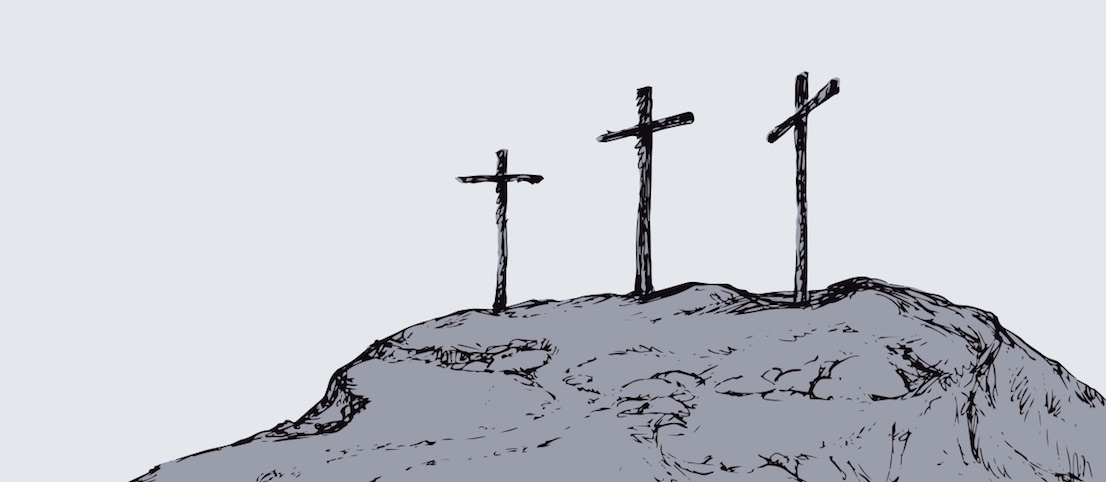
We all know that the cross and resurrection are central to our salvation. But what role should they play in our spirituality?
A few years ago I read a fascinating book by the historian Charles Hambrick-Stowe called The Practice of Piety. It’s a study of the spirituality of the Puritans—the 16th-century forerunners of the evangelical movement. In the book Hambrick-Stowe doesn’t describe what Puritans said we ought to do. He describes what they actually did by looking sermons, diaries, and devotional manuals to build up a picture of the day-to-day piety of ordinary Christians and churches. The result is a window onto their spirituality as it was lived, experienced and practiced.
One of the striking conclusions of Hambrick-Stowe’s work is the way the cross and resurrection shaped the rhythms of Puritan piety.
For the Puritans, conversion involved coming to an end of one’s self—a recognition of your sin and your own inability to put things right. This then led you to embrace Christ in faith and receive new life from him through the Spirit. So each conversion was a kind of death and resurrection. This was rooted in the Bible’s emphasis on our union with Christ. The New Testament rarely calls Christians ‘Christians’; much more often it speaks of those who are ‘in Christ’. We are united to Christ—in Christ—and therefore his death is our death and his resurrection is our new life.
For us, Lent is an opportunity to calibrate our lives to a different rhythm, an opportunity to re-centre of lives around the cross and resurrection
But what Hambrick-Stowe highlights is that for the Puritans this pattern continued throughout their lives. Here’s what he says:
The pattern of spiritual stages first established in conversion continued to mark the journey to heaven. The devotional life of the saints, the means by which they progressed on the pilgrimage, was a system of ritual self-emptying in preparation for the renewed experience of being filled by God with his grace. The redemptive cycle of Christ’s death and resurrection was translated into a set of spiritual exercises, devotional acts that became the path of renewed repentance and fulfilment.
Thomas Hooker and Thomas Shepard, for example, were both part of the first generation of Pilgrim Father’s to sail to America. Shepard and Hooker divided the process of redemption into two parts. The first act was that of preparation, the “cutting off of the Soul from the old Adam.” The second act was that of implantation, “putting or ingrafting the Soule into the second Adam, Christ Jesus.” A Christian then continued to grow through repeated preparation and implantation.
The spiritual dynamics of preparation and implantation—death and resurrection, repentance for sin and subsequent salvation—described the actual experience of individuals over the course of their spiritual lives … The redemptive cycle of death and resurrection was an element in the very air New Englanders breathed, unavoidable and ubiquitous in the rituals of public worship and the words of private devotion … In this life New Englanders continually expressed the full cycle of sin and salvation in worship and devotion.
What’s was striking to me was the way this pattern of cross and resurrection was embedded into the rhythms of their personal and corporate lives. Each morning Puritan families confessed their sin and received God’s mercy afresh. They prepared for Sunday worship and for communion with a time of self-examination (often on the Saturday evening). They confessed their sin and need in readiness to receive grace and power from God. They repeatedly went through a kind of re-conversion—coming to an end of oneself and receiving new spiritual life through Christ.
The cross and resurrection shaped the rhythms of Puritan piety.
What, I wonder, are the ways in which we can embed the pattern of cross and resurrection into our daily, weekly and annual routines? Perhaps it’s time to rehabilitate Easter as the central moment in our year. It has to be said that the Puritans were suspicious of Lent. For them it was irretrievably associated with empty, formal religion. But our context is very different. We live in a deeply secular culture that is eradicating the remaining vestiges of Christianity from the public calendar. For us, Lent is an opportunity to calibrate our lives to a different rhythm, an opportunity to re-centre of lives around the cross and resurrection.
Tim Chester's new Lent devotional, The Glory of the Cross, is available now.
---
Quotes from Charles Hambrick-Stowe, The Practice of Piety: Puritan Devotional Principles in Puritan New England, The Omohundro Institute of Early American History, University of North Carolina Press, 1982